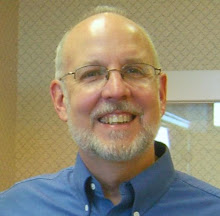This is the first post in a new series about meditation. If you follow this blog, you will be emailed about future posts on the subject.
Meditation has long been the domain of religion and spirituality. Every religion practices its own form of meditation. Catholics use the rosary as a meditation guide to help them focus on events in the life of Christ. Zen Buddhist monks practice zazen which is a meditation on the unity of body, breath and mind - and ultimately of all things. Protestants meditate on the Bible reciting Bible verses several times, each time emphasizing a different word allowing the full meaning of the text to sink in. Sometimes religious groups believe they have discovered the right way to meditate. In my opinion, there is no wrong way to meditate. In fact, meditation has left the confines of sanctuary and monastery and found its way into sports and even business.
I define meditation very broadly as any mental exercise that incorporates breathing, relaxation, and focus. This practice has made its way into sports under the term, visualization. Visualization is a type of meditation that incorporates relaxation and focus on such visual concepts as the perfect golf swing, the perfect swim stroke, or just plain winning. Many Olympic athletes take time each day to relax and focus on receiving the gold medal. Does it work?
The 1980 Soviet Olympic Team
In 1980, the Soviets conducted a visualization experiment. They divided the athletes into four groups. The first group practiced as usual. The second group devoted 25% of their practice time to visualization. The third group devoted 50% of their practice time to visualization. The fourth group devoted 75% of their practice time to visualization. At the 1980 Olympics, the group that spent 75% of their time practicing physically and devoted 25% of their practice time to visualization won the most medals.
The moral to that story is simple. Visualization works, but it is no substitute for practice. Visualization can enhance and empower practice sessions, but not replace them.
The DC Experiment
John Hagelin hypothesized that if enough people meditated in a city, they could measurably reduce the crime rate. In 1993, an experiment was conducted in the nation’s capital. About 500 people gathered in Washington DC and began meditating toward the specific purpose of reducing the crime rate in the city. At the end of 4 weeks, the crime rate had dropped about 2%. Then there was a marked increase in the number of individuals meditating. By the end of the eighth week, there were almost 4,000 people gathering and mediating. By the end of the 2 month experiment, the crime rate had dropped 23 %.
Clinical Trials
There have been a few clinical trials on the effects of intercessory prayer (a form of meditation) in the treatment of disease. In 1988 the Southern Medical Journal reported a significant better recovery of heart patients that received intercessory prayer as part of their therapy. A similar study with rheumatoid arthritis patients was published in 2000 in the same journal. Again, patients who received in person intercessory prayer had significantly improved recoveries.
To some, measurable results from prayer, meditation and visualization seems spooky and mysterious. There is really nothing mysterious about it. Mind, body and spirit are interconnected. We have all experienced how strengthening the body gives strength to the mind and spirit. Illness that affects the body, can also affect the mind and spirit. Why must we start with the body? Doesn’t it stand to reason that if we strengthen the spirit, the body and mind will follow?
More to come later. Don't forget to follow the blog.
Friday, January 13, 2012
Subscribe to:
Post Comments (Atom)

No comments:
Post a Comment